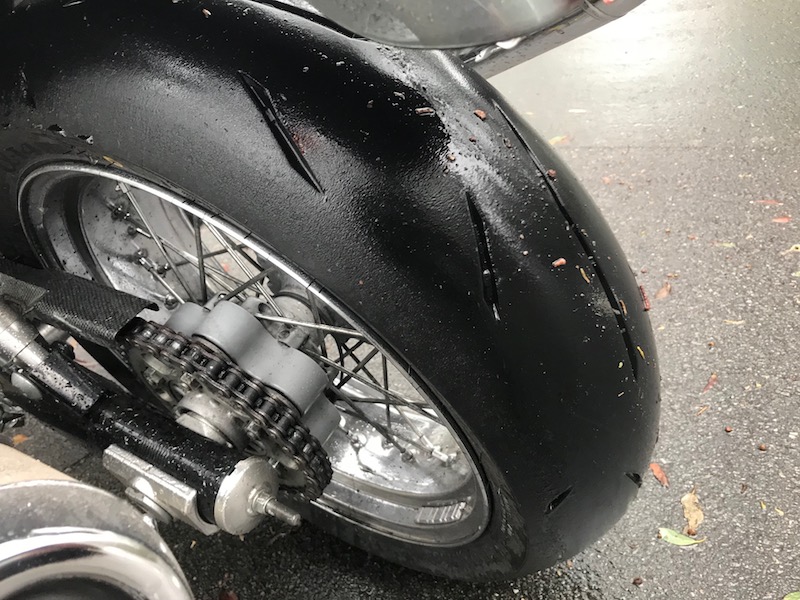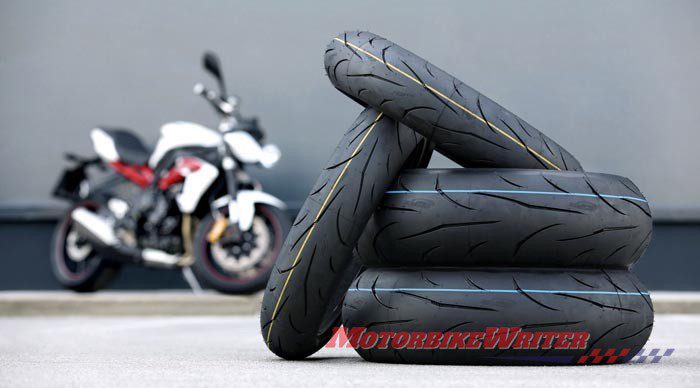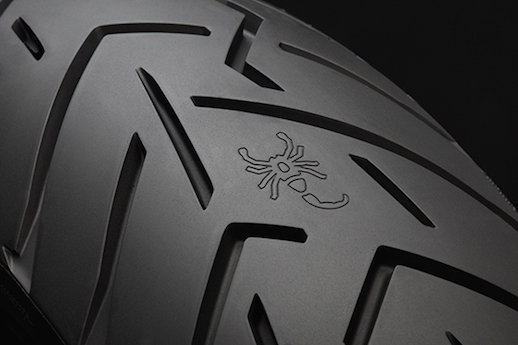Have you ever wondered what your motorcycle tyres are made of, why they are black and shiny and whether scrubbing off the shine and warming up the tyres improves grip?
Motorcycle industry veteran Dale Schmidtchen takes a look at tyre compounds and answers these questions in part one of a two-part insight into tyres.
Click here for part 2 to find out how your tyres are made.
Rubber tyres
Early tyres were a simple affair, containing essentially butyl rubber.
Eventually synthetic rubber was invented by German scientists in the 1920s, dramatically improving all aspects of the tyre and providing the ability to manufacture new designs.
Anyone who has visited the tropics will have seen plantations of rubber trees, where the sap is collected for rubber production. Some of this does find its way into tyre production, but generally this is more for rubber bands, rubber gloves and elastic.
A modern tyre is around 70% synthetic rubber and the remainder is carbon black (fine carbon powder) and other chemicals to make up the rest of the recipe.
Compounders at tyre factories spend a great deal of time experimenting and improving the recipe. Their end results are a closely guarded secret, to the point that I am aware of some compounders who have taken the recipe for certain mixes to the grave!
Hardness
A compound is rated in what is known as Shore Hardness which is the inability to indent a material with pressure.
Motorcycle tyres usually come in soft, medium and hard compounds. The softer the tyre the more grip it has, but the quicker it wears out quicker. Harder compounds have more stability and last longer.
However, modern motorcycle tyres usually have a range of compounds in their construction. They are typically hard in the centre for stability and wear, but softer on the edges for lateral grip.
Shore Hardness is greatly affected by temperature. For example, a poor compound rated as a hard tyre could have a poor ability to retain its integrity once heated. That means the tyre could quickly heat up, soften and begin to literally be torn apart under force of use.
This is not a factor commonly seen with major tyre brands thanks to the endless research by tyre compounders.
Black motorcycle tyres
Does a tyre need to be black? The answer is no. It can be a variety of colours, if the manufacturer is willing to fund the replacement of the extremely affordable carbon black.
An engineer I worked with made a white tyre for a 250cc Grand Prix rider that worked well, but had some issues with heat retention.
Companies such as Shinko have even produced coloured tyres that make different coloured smoke during burnouts!
Shiny tyres
A modern tyre from a large factory will be a well-finished and presentable product. It will also be shiny.
This a common point of contention among riders.
Due to a number of factors, such as public liability, there is no surface coating, or mould release, applied to 99% of modern motorcycle tyres.
Tyre manufacture involves heat at around 180C and for many decades, factories have used Teflon-coated moulds that leave a smooth finish on a tyre.
Mould release is rarely used these days on motorcycle tyres.
After all, why would a company apply a chemical to a tyre that made it slippery.? That would not only be counter-productive, but also leave the company liable if a crash or injury occurred.
‘Cleaning’ a new motorcycle tyre with acetone or similar hydrocarbon prior to use is not recommended. These chemicals permanently affect the rubber in ways that include altering the oil content in the compound.
A modern 10kg car tyre yields 4 litres of oil, 1.5kg of steel and 4 kg of carbon. There is also a lot of oil in a motorcycle tyre and applying a solvent an oil-based product will dilute it and change the compound. Also, hydrocarbons will cause temporary softening (like a traction compound) and swelling of the rubber, meaning incorrect wear patterns, as well as altered grip.
A tyre engineer I worked with put it in these terms: “The only chemical advised to touch a tyres surface is rain water”.
The only exceptions are the stickers on the tread and fitting lube. However if a tyre shop uses a good approved wax, it will have no detrimental effect.
I have seen many people fit their own tyres with soapy water. Any water that enters the air chamber of a tubeless tyre will dramatically decrease the life of the tyre under hard use. Water vapour accelerates and retains heat, causing tyre pressures to increase. Factor in possible corrosion of the steel content of the tyre and it’s not a good practice.
Click there to find out how to scrub in a new tyre.
Tyre warmers
Tyre warmers are possibly the most abused modern racing appliance. They only have benefits to riders on a cold day or on a cold track in the opening laps.
However, I have seen numerous times where riders have used them in 40C heat, haven’t checked the thermostat and consequently baked the tyres, or have had them plugged in all day.
A good tyre warmer should heat a tyre to around 80C and cut out after that point. Any more and there is the risk of affecting the tyre’s compound and performance.
Tyres/tires?
The original word was “tire” from “attire” which relates to clothing. The tyre (tire) was considered the wheel “dressing”.
The British spelling of tyre came in the early 1800s and was formally accepted as correct around 1900. However “tire” is still commonly used in many countries.
The rubber pneumatic tyre was invented in 1847 and went into mass production in 1888 thanks to John Boyd Dunlop. Since then the product has been in continual development.
About the author:

Dale has worked at Yokohama and ran the Australian and European GP tyre services (1992 – 1999). He also worked with Goldspeed Tires in Holland (a division of Maxxis) and consulted to Kings Tire and Kenda Tire in Taiwan.



